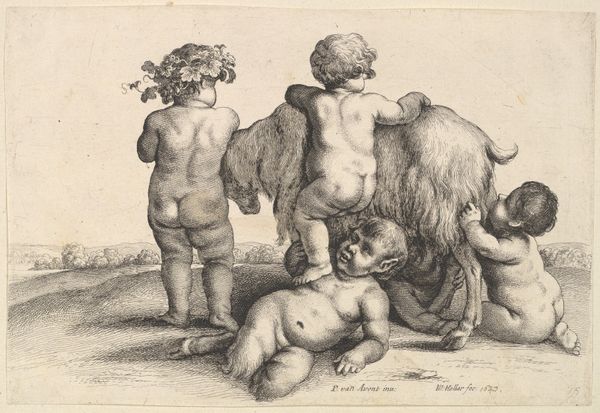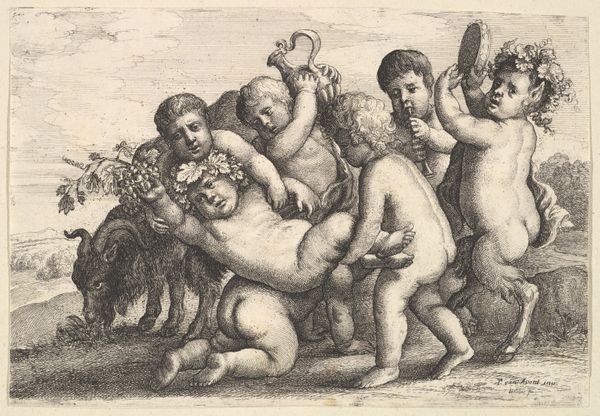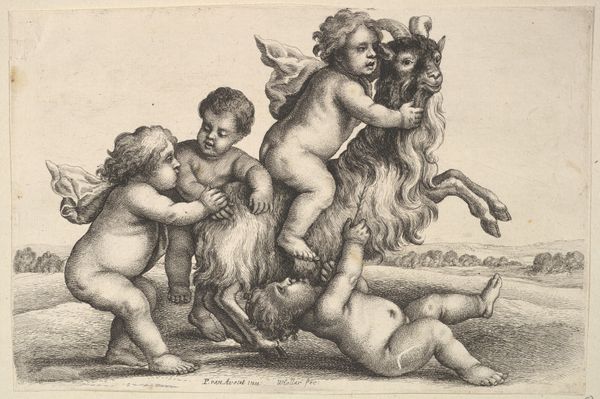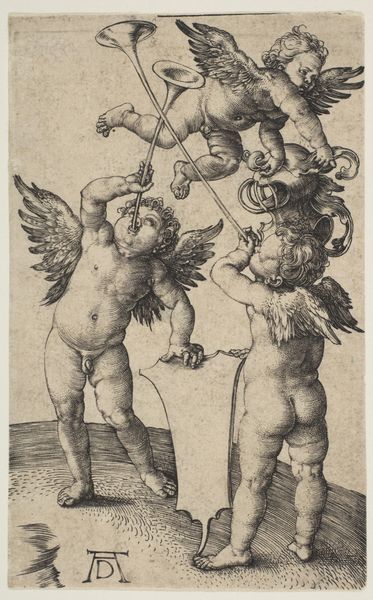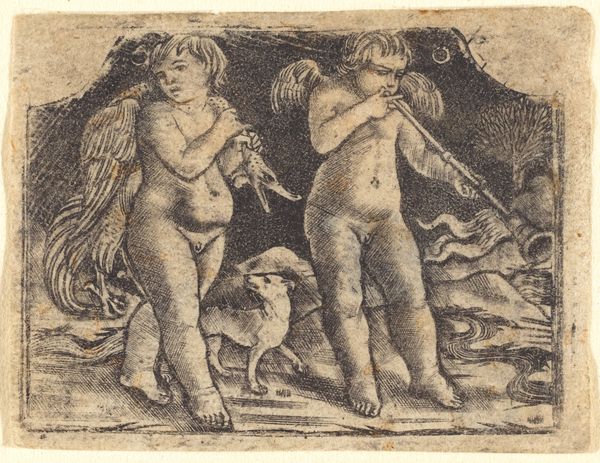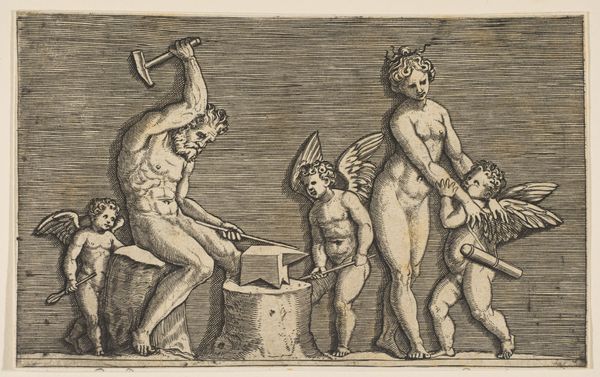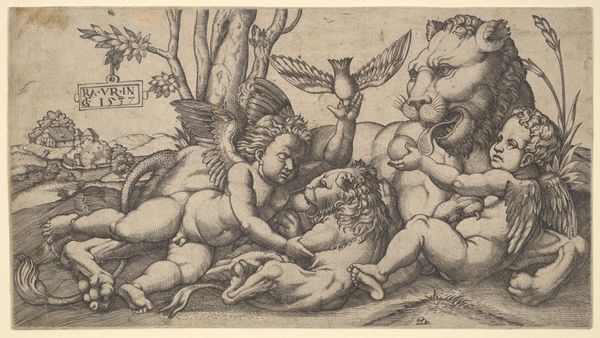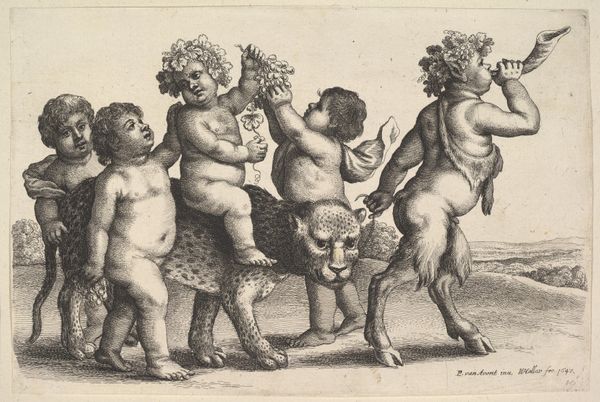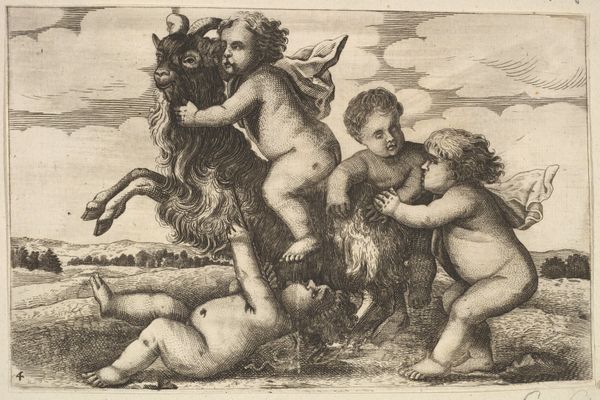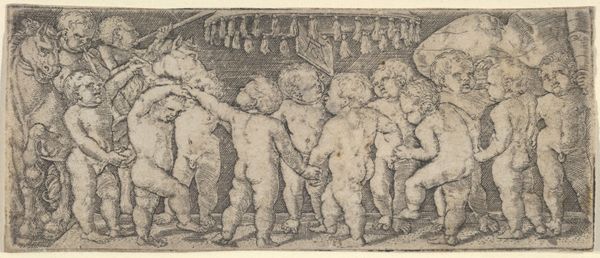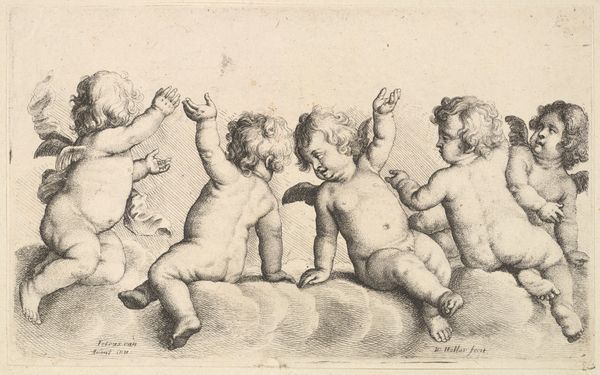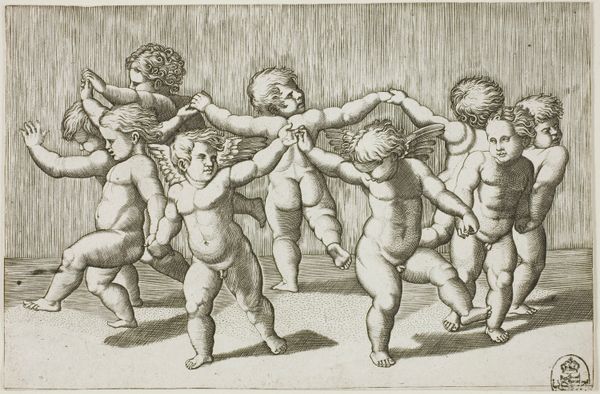
Four boys, a young satyr and a goat (copy in reverse) 1650 - 1700
0:00
0:00
drawing, print, etching
#
drawing
#
baroque
# print
#
etching
#
figuration
#
genre-painting
#
erotic-art
Dimensions: Plate: 5 1/16 × 7 7/8 in. (12.8 × 20 cm)
Copyright: Public Domain
Curator: At first glance, there's a raw, almost unsettling energy here, isn't there? It’s playful but something feels slightly off. Editor: This etching, attributed to Wenceslaus Hollar from around 1650 to 1700, is titled "Four boys, a young satyr and a goat (copy in reverse)." We find it within the Met's collection, offering an example of the enduring fascination with classical themes during this period. Curator: Right, the satyr complicates things, doesn’t it? Those aren’t just children playing, it shifts the entire dynamic into something… darker. The ownership and treatment of nature portrayed seems telling, hinting at early attitudes of resource and land control through visual cultural practice. Editor: Indeed. It’s also vital to acknowledge the power dynamics at play when depicting bodies. The etching technique allows for incredible detail—look at the textures of the goat's hair and the rendering of the children’s flesh. It both elevates and perhaps objectifies them simultaneously. Hollar, of course, was working within very specific patronage and audience expectations. The baroque style carries such strong class associations, how was erotic art and “genre-painting” used at the time? Curator: Exactly! The intersection of innocence and something more carnal or ‘erotic’ is quite unsettling and, you’re right, totally tied to socio-political contexts and the function art had at the time. What’s especially poignant is considering Hollar as not only an artist, but the art world and its players like patrons within structures of power, and even this print being a 'copy.' What kind of ownership does that imply? Who gets access to ‘fine’ art? What political views is this copy intended to proliferate? Editor: And by understanding the context of 17th century social norms, perhaps we can see in what ways we can begin to see new or continued trends. Curator: It's a reminder that art rarely exists in a vacuum. The themes it picks up often speak to unspoken narratives that echo within power structures and hierarchies. Editor: So, thank you for considering this image alongside us, and perhaps allowing it to complicate the seemingly simple themes of ‘boys playing with goat.’
Comments
No comments
Be the first to comment and join the conversation on the ultimate creative platform.
